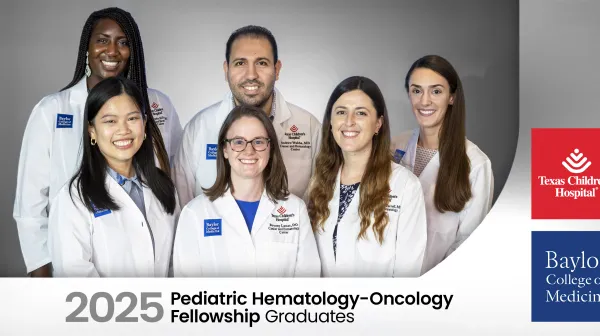While more than a third of adolescent girls experience heavy menstrual bleeding (HMB), a lack of clear guidance on screening for iron deficiency anemia caused by HMB means they’re at risk of remaining undiagnosed and untreated. Studies have demonstrated that severe anemia from iron deficiency due to HMB commonly results in the need for urgent medical care, including hospitalization and blood transfusions.
It’s one of the reasons Texas Children’s Hospital established its Young Women’s Bleeding Disorders Clinic in 2009, providing “one-stop” care for gynecologic, hematologic and psychosocial issues for teenagers with heavy or abnormal menstrual bleeding and bleeding disorders.
Built on collaboration
Effectively treating bleeding disorders requires expert subspecialty care and a multidisciplinary approach between hematology and gynecology, as well as dedicated support staff. The clinic, led by co-directors Jacquelyn Powers, MD, MS, and Jennifer Dietrich, MSc, MD, FACOG, brings together two leading programs at Texas Children’s. The Pediatric and Adolescent Gynecology Division at Texas Children's includes physicians who play a national role in the field of adolescent HMB. The Hematology Center comprises a group of hematologists with many years of expertise in managing children with bleeding disorders. Combining this expertise, the Young Women’s Bleeding Disorders Clinic highlights the power of multidisciplinary care and is uniquely positioned to provide expert medical, educational and psychosocial support to enhance quality of life for its patient population.
“Through collaboration with our colleagues, we can think more broadly and holistically about caring for patients,” Dr. Powers said. “And in cases where patients have an underlying condition, we also partner with colleagues in other specialties, like cardiology, gastroenterology or neurology, as iron disorders may impact other conditions.”
Treatment for adolescents with abnormal menstrual bleeding may involve prescribing hormonal or non-hormonal medications or placing intrauterine devices to decrease bleeding, as well as iron supplementation. In severe cases, IV iron therapy is available.
“In the past, IV therapy was reserved for the most severe cases due to high risk of adverse events, which can cause some hesitancy among physicians,” Dr. Powers said. “But new drugs that are available can be used safely and effectively in children and adolescents.”
Leading research
The clinic also provides a rare opportunity to initiate and expand cutting-edge research programs to benefit all teenagers with HMB, resulting in more than 25 peer-reviewed articles since its inception. In addition, researchers here are studying a diverse range of topics aimed at improving the reproductive health of girls and women throughout their life span, including appropriate testing for bleeding disorders such as von Willebrand disease. A recent study from Texas Children’s by Dr. Clay Cohen, associate director for the Young Women’s Bleeding Disorders Clinic, was highlighted at the recent American Society of Hematology meeting.
Currently, the team is also analyzing patient-reported quality of life outcomes before and after treatment, enrolling both children with iron disorders as well as adolescent girls with HMB.
“Iron deficiency anemia can cause symptoms such as fatigue and poor concentration, among others, but there hasn’t been a way to quantify their improvement,” Dr. Powers said. “In this study, we surveyed patients and their caregivers before treatment, as well as 1 month and 3 months following to see how their bloodwork compares with their self-reported outcomes.”
Through this work, the team hopes to be able to inform patients and their families about how they might expect to feel and when, based on the results of previous patients. Dr. Powers expects to finalize analysis and submit the research for presentation later this year.
To refer a patient or for a second opinion, use our online referral system or call 832-TCH-CARE (832-824-2273).





